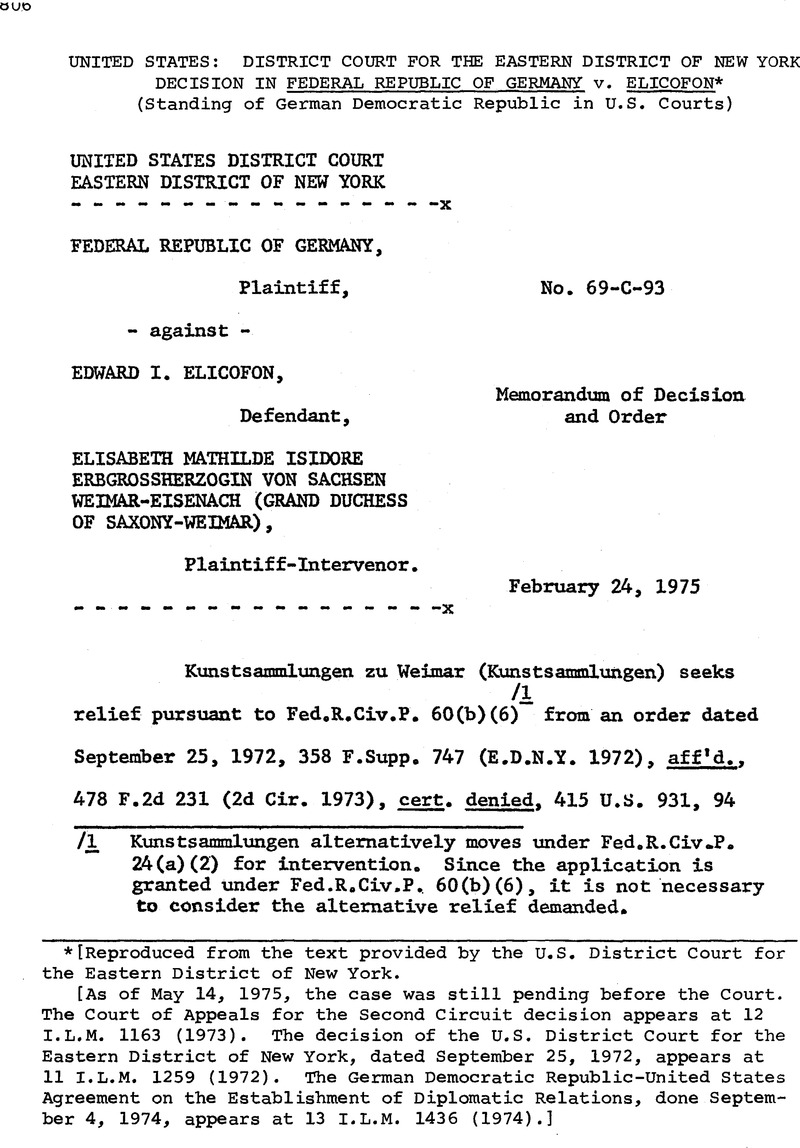No CrossRef data available.
Article contents
United States: District Court for the Eastern District of New York Decision in Federal Republic of Germany v. Elicofon*
Published online by Cambridge University Press: 04 April 2017
Abstract

- Type
- Legislation and Regulations
- Information
- Copyright
- Copyright © American Society of International Law 1975
Footnotes
[Reproduced from the text provided by the U.S. District Court for the Eastern District of New York.
[As of May 14, 1975, the case was still pending before the Court. The Court of Appeals for the Second Circuit decision appears at 12 I.L.M. 1163 (1973). The decision of the U.S. District Court for the Eastern District of New York, dated September 25, 1972, appears at 11 I.L.M. 1259 (1972). The German Democratic Republic-United States Agreement on the Establishment of Diplomatic Relations, done September 4, 1974, appears at 13 I.L.M. 1436 (1974).]
References
/1 Kunstsammlungen alternatively moves under Fed.R.CivJP 24(a)(2) for intervention. Since the application is granted under Fed.R.Civ.P. 60(b)(6), it is not necessary to consider the alternative relief demanded.
/2 In Western Steel Erection Co. v. United States. 424 F.2d 737 (10th Cir. 1970); Screven v. United States. 207 F.2d 740 (5th Cir. 1953); Mobay Chemical Co. v. Hudson Foam Plastics Corp., 277 F.Supp. 413 (S.D.N.Y. 1967);United States V. 140.80 Acres of Land. 32 F.R.D. 11 (E.P. La, 1963), the party seeking relief was not a party to the judgment or order, and relief was denied for that reason.
/3 In Smith, the court stated that it had not yet decided whether a rule regarding leave should be adopted in the Second Circuit. There is long-standing opposition in the Circuit to such a rule, see, e.g.. S.C. Johnson & Son v. Johnson. 175 F.2d 176 (2d Cir. 1949) (Clark, J., dissenting); Perlman v. 322 West Seventy-Second Street Corp., 127 F.2d 716 (2d Cir. 1942).




